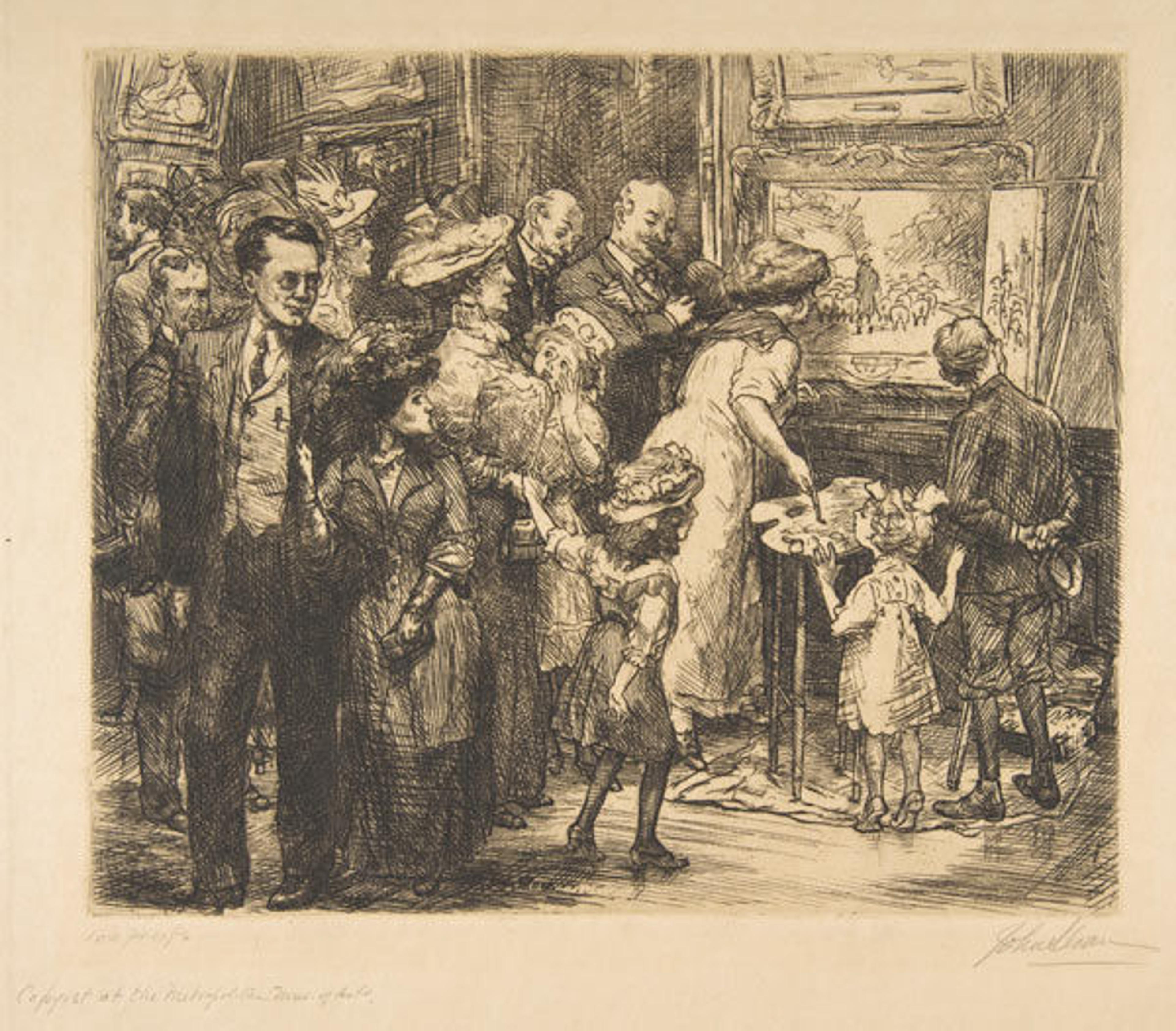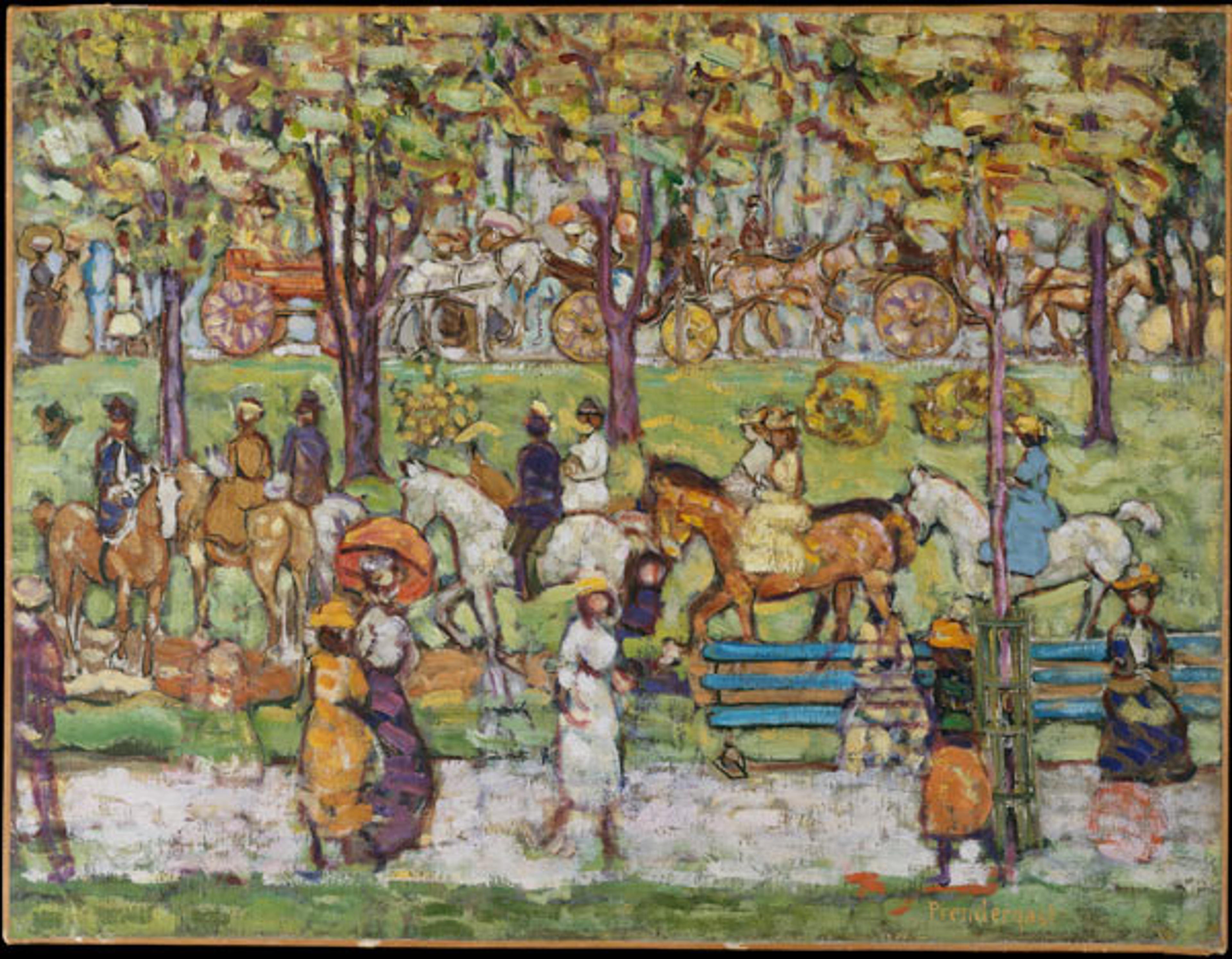
John Sloan (American, 1871–1951). Copyist at The Metropolitan Museum of Art, 1908. Etching; plate: 7 3/8 x 8 3/4 in. (18.7 x 22.2 cm); sheet: 12 15/16 x 13 15/16 in. (32.9 x 35.4 cm). The Metropolitan Museum of Art, New York, Gift of Mrs. Harry Payne Whitney, 1926 (26.30.28). © 2015 Artists Rights Society (ARS) New York
«There's something new to see in gallery 772: a more expansive look at the work of the early-twentieth-century urban realists known as the Ashcan School. Robert Henri, William Glackens, George Luks, Everett Shinn, and John Sloan explored many dimensions of modern life in paintings, drawings, and prints, and now—for the first time in The American Wing—you can see their work across various media in one gallery.»
Working as newspaper illustrators in Philadelphia, Glackens, Luks, Shinn, and Sloan took classes at the Pennsylvania Academy of the Fine Arts, where they came under the tutelage of the charismatic artist and educator Henri, who encouraged them to paint contemporary city scenes. All of the artists relocated to New York by 1904 and were later dubbed the Ashcan School. They would go on to participate in several key exhibitions of progressive art in the city—from the 1908 showing of The Eight at the Macbeth Galleries to the 1913 Armory Show. The former laid the groundwork for modernism in American art, while the latter offered most Americans their first in-depth introduction to international modern art.
The Met's new installation features paintings by Henri, Glackens, Luks, and Sloan in addition to their realist associate, George Bellows, and other colleagues that made up The Eight—Arthur B. Davies, Ernest Lawson, and Maurice Prendergast (whose Post-Impressionist watercolors will be featured in the upcoming exhibition Maurice Prendergast: Boston Public Garden Watercolors, on view June 1).

Maurice Brazil Prendergast (American, 1858–1924). Central Park, ca. 1914–15. Oil on canvas; 20 3/4 x 27 in. (52.7 x 68.6 cm). The Metropolitan Museum of Art, New York, George A. Hearn Fund, 1950 (50.25)
In addition, four New York etchings by John Sloan, from the collection of the Department of Drawings and Prints, hang alongside a dynamic pastel of Herald Square by Everett Shinn. All of the Sloan prints were donated to the Metropolitan in 1926 by Mrs. Harry Payne Whitney, also known as Gertrude Vanderbilt Whitney. The noted sculptor (her bronze Head of a Spanish Peasant is also on view in the gallery) was an early supporter of the Ashcan artists and, in 1930, offered her entire collection of American modernists to the Metropolitan Museum.
While her generous offer was declined by then-Director Edward Robinson, who famously disliked contemporary and American art, it left Whitney and her colleague Juliana Force determined to establish their own museum, which they did on West Eight Street, in 1931. Today, as we celebrate the opening of the Whitney Museum in their new downtown home—and anticipate the Met's forthcoming occupancy of the Whitney's former Marcel Breuer building on Madison Avenue—it's the right moment to highlight the vision and taste of two remarkable women who wouldn't take no for an answer.